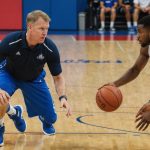In the pursuit of health, fitness, and wellness, you regularly engage in various forms of exercise and training. But, it’s not always smooth sailing – one common side effect of vigorous exercise is delayed onset muscle soreness, or DOMS. Whether you’re a seasoned athlete or a beginner sports enthusiast, DOMS is a natural, albeit uncomfortable, part of the body’s recovery process.
Understanding Delayed Onset Muscle Soreness (DOMS)
Before we discuss how to manage DOMS, let’s first understand what it is. Delayed onset muscle soreness refers to the muscle pain and stiffness that begins a few hours after performing a new or intense exercise, particularly one that includes eccentric movements or high-intensity interval training.
In the same genre : What specific exercises can improve tendon strength for powerlifters?
DOMS is thought to be caused by microscopic damage to muscle fibers during exercise. This damage triggers an inflammatory response, leading to pain, swelling, and stiffness. While DOMS can be uncomfortable, it is generally safe and can even signal that your muscles are adapting to your training regimen.
According to a review published in the Journal of Sports Medicine and Physical Fitness (doi:10.23736/S0022-4707.18.08302-1), DOMS typically peaks 24 to 72 hours after exercise and then gradually subsides.
Topic to read : How can athletes use biofeedback to enhance muscle coordination?
Strategies for Managing DOMS
So, what can you do to alleviate the discomfort of DOMS? Various strategies can help manage this muscle soreness.
Active Recovery
Active recovery, which involves performing light, low-impact exercises on your rest days, can help alleviate DOMS. According to a study found on Google Scholar, active recovery aids in removing waste products from your muscles, thus promoting faster recovery and reducing muscle soreness. Try gentle activities such as walking, cycling, or yoga.
Massage
Massage is another effective strategy for managing DOMS. It helps speed up recovery by improving blood flow, reducing muscle tension, and promoting relaxation. A systematic review on PubMed (doi:10.1002/14651858.CD004577) suggested that massage can reduce the intensity of muscle soreness in the days following an intense workout.
Adequate Nutrition and Hydration
Proper nutrition and hydration are crucial components of muscle recovery. Consuming protein and carbohydrates post-workout can help repair damaged muscle tissues and replenish energy stores. Staying well-hydrated can also aid in muscle recovery and reduce DOMS symptoms.
Your post-workout meal should ideally be consumed within 45 minutes of your workout to maximize nutrient absorption.
The Role of Pain Relief Measures in DOMS Management
Apart from these, certain pain relief measures also offer respite from DOMS.
Over-the-counter Pain Relievers
Over-the-counter (OTC) pain relievers, such as ibuprofen or aspirin, can help to reduce inflammation and pain associated with DOMS. However, they should be used sparingly and only as a short-term solution, as they may have side effects with long-term use.
Topical Analgesics
Topical analgesics, like creams or gels containing menthol or capsaicin, can provide temporary relief from muscle soreness. These products work by creating a warming or cooling sensation that distracts from the pain.
Remember, each person responds differently to various DOMS management strategies. What works best for one individual may not work as well for another.
The Importance of Prevention in Managing DOMS
While managing DOMS after it occurs is essential, prevention strategies should not be overlooked.
Gradual Progression in Training
A key strategy to prevent DOMS is gradual progression in training. Jumping into a high-intensity workout routine without a proper warm-up can increase the risk of muscle damage and soreness. Instead, gradually increase your workout intensity over time to give your muscles a chance to adapt.
Warming Up and Cooling Down
Muscle warming before a workout and cooling down after are both important in preventing DOMS. A study found on CrossRef (doi:10.2165/11531930-000000000-00000) showed that a proper warm-up increases blood flow to your muscles, prepares them for exercise, and can help reduce muscle soreness.
While there may not be a one-size-fits-all solution to managing DOMS, a combination of the strategies mentioned above can aid in the recovery process and help you get back to your regular exercise routine as quickly as possible. As you continue to exercise and adapt to new routines, you will likely experience DOMS less frequently. Remember, muscle soreness following a workout is a normal response and a sign that you are strengthening and improving your muscles.
The Impact of Hydration and Sleep on DOMS Management
Keeping your body effectively hydrated and ensuring you get enough sleep are two further essential methods to manage DOMS.
Hydration
Hydration plays a significant role in muscle recovery and overall physical performance. By keeping your body adequately hydrated, you can assist your muscles in the recovery process, reduce inflammation, and alleviate muscle soreness. According to a study from Google Scholar, dehydration can intensify muscle soreness post-exercise, emphasizing the importance of consuming adequate fluids before, during, and after your workout.
Water not only aids in maintaining adequate blood volume and supplying nutrients to the muscles but also in flushing out waste products accumulated during exercise. Additionally, water supports the production of synovial fluid, a lubricant that enables smooth joint movement. Experts suggest that you aim to drink at least half of your body weight (in ounces) of water each day as a general guideline.
Sleep
A good night’s sleep is another pivotal factor in managing DOMS. As per a systematic review published on PubMed (doi:10.1152/japplphysiol.00860.2012), sleep deprivation can hinder muscle recovery and magnify muscle pain. When you sleep, your body releases growth hormones that aid in muscle repair and rebuilding. Adequate sleep also ensures that your body is fully rested and ready for the next training session.
Thus, ensuring that you get 7-9 hours of sleep per night and staying well-hydrated can significantly aid in reducing the symptoms of DOMS.
Conclusion: Balancing Exercise and Recovery for Effective DOMS Management
In conclusion, managing Delayed Onset Muscle Soreness (DOMS) effectively requires a balance between regular exercise and ample recovery time. Key strategies for managing DOMS include active recovery, massage, adequate nutrition, hydration, and sleep. Pain relief measures such as over-the-counter pain relievers and topical analgesics can provide temporary relief, while gradual progression in training, warming up, and cooling down can help prevent DOMS.
Individual responses to these strategies can vary, and what works best for one may not work for everyone. Continuing to experiment with different combinations of these strategies can assist you in finding the optimal balance that works for your body.
Remember, while DOMS can be uncomfortable, it is a sign of muscle adaptation and strengthening. With proper management strategies and preventative measures, you can reduce the severity and duration of DOMS, helping you to maintain your exercise routine and reach your fitness goals. The key is to treat your body with care and give it the rest and nutrients it needs to recover and adapt.
As you continue to train, your body will become accustomed to the intensity of your workouts, and the frequency of experiencing DOMS will likely decrease. So, don’t let the fear of muscle soreness deter you from pursuing your fitness journey. Instead, embrace it as a natural part of the process and a testament to your hard work and dedication.


















